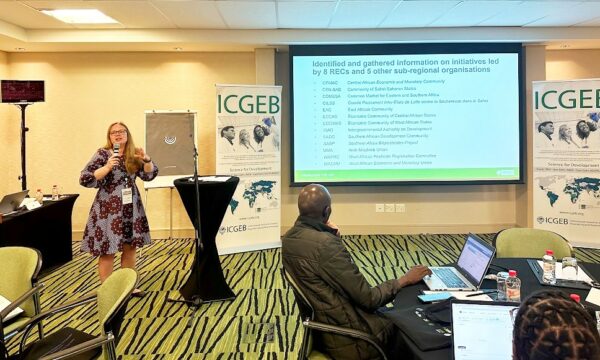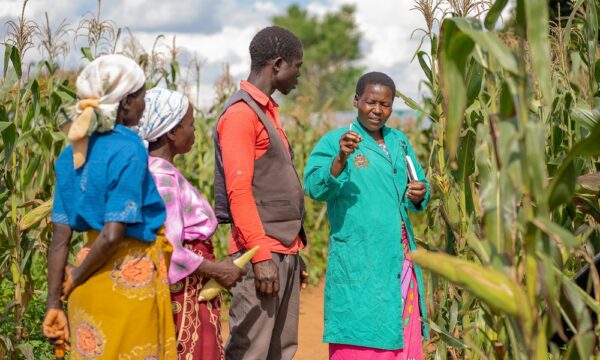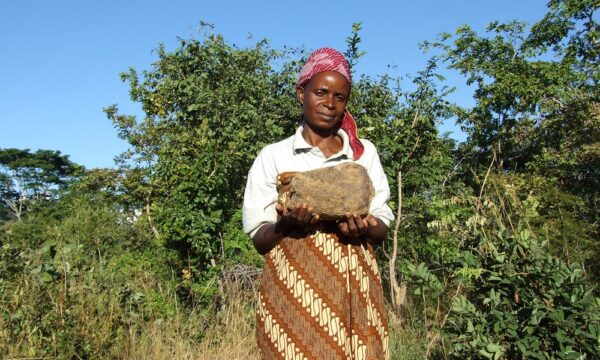
Image: Woman in the West Indies with mycetoma caused by a fungal organism
CDC/ Dr. Lucille K. Georg
From Harpur Schwartz, an economics/global health student from Connecticut College, USA, interning with Cabi’s Global Health team.
While tuning in to the live broadcast of the Sixty-ninth World Health Assembly taking place at the World Health Organization (WHO) headquarters in Geneva, Switzerland, mycetoma reached the discussion floor. At the risk of sounding naïve, I’m going to tell you that I had never heard of mycetoma – although a quick google search revealed images resembling elephantiasis. As a student studying global health, I was a little disappointed with myself; I mean I have at least heard of the other neglected tropical diseases (NTDs). But if mycetoma was unfamiliar to me, how many other people had never heard of this disease? I have provided answers to some basic questions I had about mycetoma in case you too are unfamiliar with this disease…
What is mycetoma?
The World health Organization describes mycetoma as, “… a chronic, progressively destructive morbid inflammatory disease usually of the foot but any part of the body can be affected”. This disease is caused by a bacterial (actinomycetoma) or fungal (eumycetoma) infection where the organism enters the body through a minor trauma or a penetrating injury (i.e. commonly a thorn prick). It is believed that the infection enters the body after this pricking occurs, but there are no concrete studies determining transmission. A good video on it can be found here in Global Health Now's Spotlight on Mycetoma by Amy Maxmen.
Is there a cure?
In terms of treatment, curing actinomycetoma using antibiotics has about a 90% success rate. The use of antifungals to treat eumycetoma has a success rate of about 35%, but in 2016 a new antifungal agent, fosravuconazole, will be the subject of the First Clinical Trial in Mycetoma conducted by Drugs for Neglected Diseases Institute (DNDi). Because the disease takes a slow, relatively pain-free progression, mycetoma is at its most advanced stages once it is diagnosed. It is at these later stages when amputation becomes necessary.
What about prevention?
Currently, there are no vaccines available for mycetoma. Although there is limited research and no conclusion has been made about the effect of footwear on mycetoma prevention, it is accepted that footwear protects against penetrating injury and the WHO advises its use by people living in or travelling to endemic areas. Researchers, program planners, and policy makers should consider the use of footwear to protect against mycetoma. If health education and footwear could be the answer to mycetoma prevention, NGOs, such as The Shoe That Grows that donates footwear to individuals living in extreme poverty, may have an impact on reducing prevalence of mycetoma.
Who is at risk?
According to the DNDi, mycetoma is endemic in tropical and subtropical areas within the ‘Mycetoma belt’—this endemic area is between the latitudes 15 degrees South and 30 degrees North. The bacterial form is prevalent in Central and South America, and the fungal form is commonly found in Africa; Sudan is referred to as the “epicentre” of the disease – The Mycetoma Research Center in Khartoum, Sudan has actually recently been recognized as a WHO Collaborative Center for mycetoma. In these affected regions, those that are most at risk are young males aged 20 to 40 years, individuals who are of low socioeconomic status, those who walk barefoot and manual workers.
What needs to be addressed?
The approximate time for treatment is 12 months and it costs about 30 US dollars per month. The current treatment is neither safe nor affordable. The DNDi states that, “An effective, safe, affordable and short-term curative treatment which is appropriate for rural settings is desperately needed”.
What is currently being done to address mycetoma?
The 138th Executive Board of the World health Organization requested a mycetoma resolution to the World Health Assembly. At the Sixty-ninth World Health Assembly, a new resolution to help raise awareness of mycetoma was adopted. By categorizing mycetoma as a neglected tropical disease, wider recognition of the disease will lead to a boost in the development of control strategies and tools to be implemented in the areas where this disease is prevalent. Earning a place on this list means the WHO will educate Ministers of Health around the world about mycetoma, focusing on disease prevention. By being recognized as a neglected tropical disease, donors who fund research and medicine will no longer overlook mycetoma and steps will now be made to stop patients from suffering.
Where can I learn more?
Mycetoma has been a neglected disease and therefore little research is available. However, a quick search on the CABI Global Health database led me to 2055 records discussing mycetoma (Madura foot) dating back to 1912. I’ve picked out a few for you to read below.
An Unusual Case of Mycetoma pedis, complicated by a Blastomycotic Infection
Early diagnosis, treatment and epidemiology of mycetoma
Mycetoma in the Sudan: an update from the Mycetoma Research Centre, University of Khartoum, Sudan
Blogs:
Mycetoma: The PLOS NTDs Collection
A word to the wise (Aspergillosis)
In the news:
A Disease So Neglected It’s Not Even On ‘Most-Neglected’ Lists
Mycetoma: Hope for a Devastating Neglected Disease
A Flesh-eating Fungus Wrecks Lives and No One Cares
First Steps for a Dreadful Disease: Get on the List
The Opposite of Martin Shkreli: Drug Development Without Profit
Further Reading:
Mycetoma: a unique neglected tropical disease
The mycetoma knowledge gap: identification of research priorities
Related articles
Related News & Blogs
Biosecurity and skills development workshop brings together key players in Africa’s plant health ecosystem
CABI has convened a plant biosecurity training and skills development workshop bringing together key players in Africa’s plant health ecosystem keen to help the continent’s smallholder farmers improve their livelihoods and food security. The workshop w…
23 June 2025







